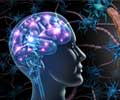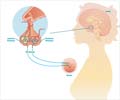Haloperidol Medication Information
Learn everything you need to know about Haloperidol-pronunciation, uses, dosage guidelines, indications, and when to take or avoid it.
Get up-to-date information on side effects, precautions, warnings, and proper storage to ensure safe usage.
Explore Haloperidol brand names commonly used in India and internationally, along with detailed pricing information. Consult your healthcare provider for tailored medical advice.
Generic Name : Haloperidol Pronunciation : ha loe per' i dole ICD Code : Y49.5 Therapeutic Classification : PsychotherapeuticsBrand Names or Trade Names of Haloperidol
India :
International :
Haldol
Why is Haloperidol Prescribed? (Indications)
This medication is a tranquilizer, prescribed for schizophrenia. It may block certain chemicals in the brain.When should Haloperidol not be taken? (Contraindications)
Contraindicated in patients with coma, Parkinson’s disease, severe central nervous system depression and hypersensitivity.What is the dosage of Haloperidol?
Acute problems: IM/PO- The recommended dose is 1 mg to 5 mg (up to 10 mg) Maximum: 100 mg daily.IV- The recommended dose is 5 to 10 mg as a single dose. Chronic conditions: 0.5 to 20 mg daily orally
How should Haloperidol be taken?
It comes as a tablet and concentrated liquid to take by mouth, with or without food.What are the warnings and precautions for Haloperidol?
• Caution should be exercised in patients with history of blood disease porphyria, decrease in white blood cells, electrolyte disturbances, high or low blood pressure, dementia, Alzheimer’s disease, seizures, abnormal electroencephalogram (EEG), thyroid problems, neuroleptic malignant syndrome (NMS), heart diseases, cancer, any allergy, who are taking other medications, elderly, children, during pregnancy and breastfeeding.• Avoid alcohol consumption.
• It may cause drowsiness, dizziness or blurred vision, do not drive a car or operate machinery while taking this medication.
• Avoid exposure to sunlight; otherwise it may cause sunburn easily.
• Avoid becoming overheated; otherwise heatstroke may occur.
• Patient may develop with increased risk of neuroleptic malignant syndrome (NMS), involuntary movements with the following symptoms: fever, stiff muscles, confusion, abnormal thinking, fast or irregular heartbeat and sweating. If it is so consult with your doctor.
• Rarely it may cause prolonged or painful erection; if it is so consult with your doctor.
What are the side effects of Haloperidol?
Heart - Fast heart rate and low/high blood pressure.Central Nervous System - Movement disorder, sleeplessness, restlessness, anxiety, elevated mood, agitation, drowsiness, depression, lethargy, headache, confusion, vertigo and seizures.
Body as a Whole - Neuroleptic malignant syndrome (NMS).
Blood - Anemia and decrease in white blood cells.
Liver - Impaired liver function and/or jaundice.
Skin - Pimples, photosensitivity and loss of hair.
Genitourinary - Spontaneous milk secretion, breast engorgement, menstrual irregularities, breast enlargement in male, impotence, increased sexual drive and urinary retention.
Gastrointestinal - Loss of appetite, constipation, diarrhea, increased salivation, indigestion, nausea, vomiting and dry mouth.
Respiratory - Asthma.
Eye - Visual disturbances.
Metabolic - Increased sugar.
What are the other precautions for Haloperidol?
It may affect blood sugar; monitor blood sugar regularly while taking this medication.Avoid contact with people who have infections.
What are the storage conditions for Haloperidol?
Store it at controlled room temperature (15°-30°C).Schedule : H
Prescription drugs - Drugs to be sold only under the prescription of a Registered Medical Practitioner.
















